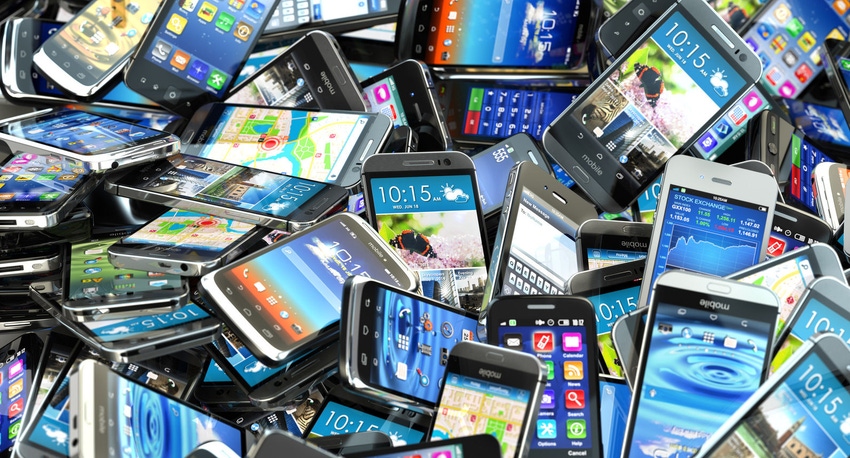Samsung and Xiaomi benefit from Huawei misery
US aggression towards Huawei seems to be paying-off as smartphone shipments in Europe swing away from the Chinese vendor, towards Samsung and Xiaomi.
August 12, 2019

US aggression towards Huawei seems to be paying-off as smartphone shipments in Europe swing away from the Chinese vendor, towards Samsung and Xiaomi.
Although Huawei is still a profitable and growing company, some might fear this growth is too concentrated on the Chinese market thanks to US attempts to damage credibility internationally. According to Canalys estimates, this could be the case, with European smartphone purchases shifting away from the previously surging Huawei brand and towards rivals Samsung and Xiaomi.
“For years, a focus on operating profit has stifled its product strategy,” said Analyst Ben Stanton. “But this year, the shackles are off, and winning back market share is its clear priority. But its success is not solely due to product strategy.
“Samsung has been quick to capitalize on Huawei’s US Entity List problems, working behind the scenes to position itself as a stable alternative in conversations with important retailers and operators.
“A lack of brand loyalty among users of low-end and mid-range Android smartphones, which has blighted Samsung for so long, has become the catalyst for its best performance in years. Europe keeps its reputation as one of the most brand-volatile smartphone markets in the world, rife with danger, but also opportunity.”
As you can see from the table below, the instability of the European market is living up to its reputation.
Brand | Q2 2019 Shipments (millions) | Q2 2019 market share | Annual change |
Samsung | 18.3 | 40.6% | +20% |
Huawei | 8.5 | 18.8% | -16% |
Apple | 6.4 | 14.1% | -17% |
Xiaomi | 4.3 | 9.6% | +48% |
HMD | 1.2 | 2.7% | -18% |
Others | 6.4 | 7.7% | -17% |
Total | 45.1 |
Looking at the shift, there is clearly homage being paid to the troubles of the Chinese vendor.
Last month, Huawei unveiled its financial results for the first six months of 2019 with a 23% year-on-year increase. It did appear many of the gains, including in the fast-growing consumer business unit, were in its domestic Chinese market and this research from Canalys backs-up the assumption, at least for smartphones.
Perhaps this also demonstrates the smartphone has become merely a vessel for bigger and better things. With marginal differentiation between flagship devices nowadays, Huawei made gains with products which met consumer expectations but undercut rivals on price. This pricing strategy was paired with an aggressive above-the-line advertising campaign through football sponsorship and traditional advertising to build brand credibility.
However, the White House endorsed propaganda campaign seems to be hitting home. The only difference between now and 2018 is the dents to Huawei’s credibility. It appears European consumers are much more Android-loyal than they are to the smartphone brand.
The beneficiaries of this fall from favour has been Samsung and Xiaomi. Canalys claims three of the top five selling devices in the European market were Samsung, reasserting its dominance, though Xiaomi has continued its impressive rise through the ranks. This might be down to two reasons.
Firstly, Xiaomi’s reputation as a more price-aware brand is clearly catching-on. The Chinese challenger has been making promising gains in some of the developing markets, India is a prime example, though it has managed to position itself as a cheap but reliable alternative for cash-conscious consumers in the European market also. A 48% year-on-year gain is impressive in anyone’s eyes.
Secondly, telcos and distributors might be pushing Xiaomi and alternative Android devices more heavily through advertising campaigns. The more Android fanboys who are turned-off by Huawei, the more prominent Samsung becomes. The more prominent Samsung becomes, the greater its weight during negotiations with channel partners. A market dominant smartphone brand is not good for any of the telcos or the distributors.
The Apple decline is certainly an interesting one also. This is traditionally a quiet quarter for the iLeader, with flagship devices usually launched in September, though a 17% decline is a worrying sign for executives. With the fall in smartphone shipments significantly below the global total decline, either the iCultists are becoming much more price-sensitive, or they are being tempted by Android rivals. Neither is good news.
The global smartphone market is in decline currently, which is perhaps down to two factors more than anything else. Firstly, the current 5G hype might have consumers delaying the purchase of a new device, and secondly, the high-prices of largely uninspiring smartphones might be encouraging longer replacement cycles.
There will of course be numerous other factors to consider, but one thing is clear, some brands are negotiating the baron times much more successfully than others.
About the Author(s)
You May Also Like











_1.jpg?width=300&auto=webp&quality=80&disable=upscale)


.png?width=800&auto=webp&quality=80&disable=upscale)